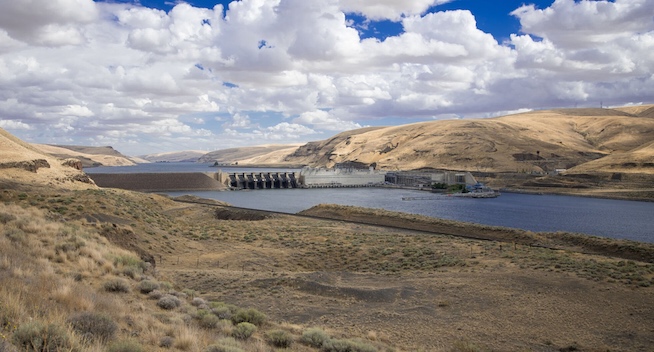forum
library
tutorial
contact

Protect U.S. Hydropower on
the Northwest's Snake River
by U.S. Sen. Jim Risch and Steve Daines
Washington Examiner, April 17, 2024
|
the film forum library tutorial contact |

|
Protect U.S. Hydropower on
by U.S. Sen. Jim Risch and Steve Daines
|
Make no mistake,
the dams are here to stay.
 President Biden's radical green agenda is an assault on Americans' way of life, especially in Western states. The most recent target: The four lower Snake River dams in southeastern Washington that provide clean, reliable energy to thousands of homes and businesses across the Northwest.
President Biden's radical green agenda is an assault on Americans' way of life, especially in Western states. The most recent target: The four lower Snake River dams in southeastern Washington that provide clean, reliable energy to thousands of homes and businesses across the Northwest.
In a flagrant demonstration of hypocrisy, the Biden administration wants to remove this clean energy infrastructure under the guise of environmentalism. This is more than a blatant contradiction to the administration's efforts to harness and expand hydropower, which U.S. Energy Secretary Jennifer Granholm referred to as "a critical renewable energy source that will help [the Biden administration] reach [its] climate goals." This is an effort to kill clean power while touting the need for more clean power -- it does not add up.
Biden's own Department of Energy has demonstrated there is no viable alternative in terms of clean energy technology or cost. From cities along the coast to the most remote areas of Idaho and Montana, these dams can rapidly increase production regardless of temperature, weather conditions, or time of day, and produce dispatchable, clean energy. Beyond energy production, the dams provide substantial benefits, including port access as far inland as Idaho and inward to states without direct access to the river.
Any change in purpose for congressionally authorized dams, let alone their removal, is at Congress' sole discretion. Despite the White House and agency officials publicly acknowledging this fact, they have made significant efforts to circumvent Congress and local governments in order to move toward removal. In December, the administration released documents announcing a "partnership" resulting from a "mediation" process. This process, however, was closer to a backroom deal made by two parties who wanted nothing to do with a consensus and input-driven agreement.
This is not a viable path forward for the Pacific Northwest region to address growing electricity demands, and it certainly does not have the best interests of Idahoans or Montanans in mind. Our states -- fellow sovereign governments and co-managers of aquatic species -- were deliberately left out of this "partnership." Despite being granted status as parties to the litigation, the Biden Administration also completely ignored our rural electric utilities and river users.
This is not this administration's first effort to usurp Congress, ignore state governments, dismantle jobs, increase costs, and upend stability. If left unchecked, it will certainly not be the last. We cannot allow the administration to ignore the needs of the American people and cherry-pick when to support clean energy and transportation. Regardless of these flawed efforts, Congress is the backstop in protecting the Snake River dams. And make no mistake, the dams are here to stay.
learn more on topics covered in the film
see the video
read the script
learn the songs
discussion forum
